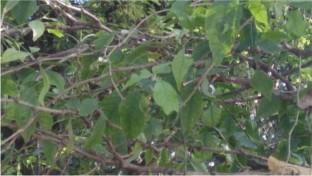Green Synthesis of Fe Doped TiO2 Nanoparticles Using Aegle marmelos Leaves Extract for the Photocatalytic Degradation of Rhodamine B Dye
Abstract
The present study describes the green synthesis of iron/titanium dioxide nanoparticles to enhance their photocatalytic applicability for degradation of commonly encountered pollutant Rhodamine B (RhB) dye. Iron-doped TiO2 nanoparticles with the crystallite size 25 nm were successfully synthesized by a simple, eco-friendly synthesis route using Aegle marmelos leaf extract. Morphological and structural characterization of the product was done by the field emission scanning electron microscopy (FESEM), EDS, high-resolution X-ray diffraction (HRXRD) and Fourier transform infrared spectroscopy. SEM images reveal the circular morphology of TiO2 nanoparticles with interparticle gaps. According to the result of particle size analyzer, the average particle size was 34 nm which concur well with the mean crystallite size 25 nm as obtained from HRXRD. The energy band gap of the sample was determined from the UV–visible spectrum, which unveiled better absorption of light in the visible region owing to noteworthy lowering of the energy band gap of TiO2 after doping. Brunauer–Emmett–Teller (BET) characterization was also performed to analyze the specific surface area and mean pore diameter of the synthesized sample. Furthermore, the photocatalytic investigation indicates that the synthesized nanoparticles have exhibited catalytic performance in the degradation of Rhodamine B dye.


 求助内容:
求助内容: 应助结果提醒方式:
应助结果提醒方式:


